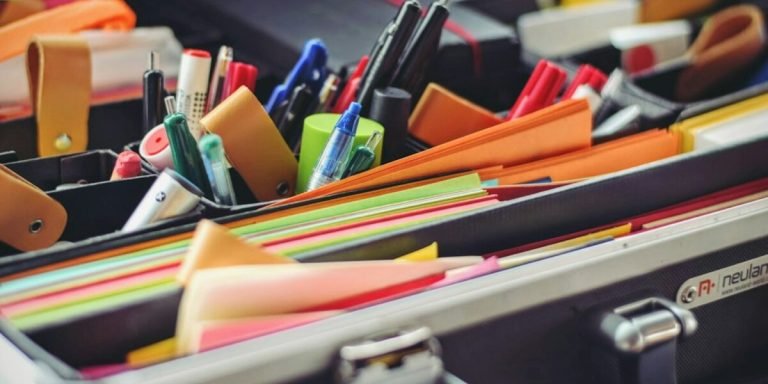Exceptional Children: Exploring the Unique Paths of Learning and Development
In the vast landscape of childhood education, a group that often needs special consideration is “exceptional children.” These individuals may have learning differences or unique abilities that don’t align with traditional teaching methods. Therefore, understanding their distinct paths to learning and development requires a different approach making it one of the crucial aspects in child education.
The area known as Special Education Resources and Support has been designed specifically for this purpose; navigating both parents and educators through bespoke strategies ensuring every child’s potential can be maximised. This doesn’t only cover academic success but also focuses on social-emotional growth essential for overall well-being, paving towards an inclusive educational environment forall exceptional children.
Did you know?
Remarkably, children with learning differences often possess above average IQs. Studies indicate that individuals like Albert Einstein and Isaac Newton who had unique learning paths were actually exceptionally intelligent.
Understanding the Landscape of Special Education Resources
The digital age has revolutionized the landscape of Special Education Resources, rendering exceptional children with a wealth of opportunities to learn and grow. Remarkable technological advancements have emerged as potential game-changers in addressing the individual needs of these students, enhancing their learning experience while providing educators with efficient tools for instruction.
These resources are not just confined within assistive devices or applications but involve an extensive range that fosters inclusivity. The cutting-edge technology integration in education aids the understanding and development process by transforming conventional teaching methodologies into more interactive ones. For instance, utilizing visual storytelling apps can simplify complex ideas which were otherwise challenging for exceptional children.
Special educational resources must keep pace in a time where innovation is supreme. Each child’s uniqueness, reflected through multiple intelligence patterns, requires attention. Rigorous research by 2023 standards spearheads the effort to refine existing methods. These methods become precisely tailored to distinct categories such as dyslexia or autism spectrum disorders.
This holistic approach increases engagement levels among exceptional students by exploring their strengths and helping overcome barriers to academic goals. Integration promotes adaptability and accessibility, bridging gaps between traditional curriculum designs and diverse student requirements.
Identifying Comprehensive Support Systems for Exceptional Children
The journey of educating exceptional children requires an understanding and acceptance of their unique learning styles. In 2023, the integration of technology in education has revolutionized how special education resources are provided to these distinct learners.
Firstly, it’s important to recognize that every child is different. Exceptional learners may include those with physical disabilities, cognitive impairments or developmental delays amongst others; however, each one holds a unique potential waiting to be discovered.
Further into Special Education Resources (SER), there has been a remarkable shift from focusing solely on imparting knowledge towards encouraging active student participation using digital platforms such as Google Classroom and Microsoft Teams – arenas where all children can connect irrespective of their abilities.
Also significant is the rise in popularity of adaptive online learning programs catering specifically to diverse learner needs. Platforms such as ABCmouse.com offer individualised lessons tailored according not only ability but also pace – offering kids full control over their educational experiences.
In addition, more schools globally are setting up dedicated Assistance Technology (AT) labs equipped with devices designed exclusively for exceptional students’ requirements including braille embossers for visually impaired students or alternative input devices aiding computer usage despite motor restrictions.
Navigating Online Platforms Offering Tailored Educational Content
With the swift shift in teaching and learning modalities, parents and educators of exceptional children must learn to navigate online platforms that offer tailored educational content. Online resources have become integral supplemental tools for special education due to their flexibility, ease of access, and adaptability.
Firstly, let’s delve into how you can identify appropriate digital platforms suitable for your child or student. Look for sites providing a catalogue of subject-specific materials with an option to filter by grade level or skill set. This allows customization according to each learner’s unique needs.
Secondly, observe if these resources promote interactive activities such as games or quizzes; they are vital in maintaining attention span while enhancing understanding through practical engagement. Exceptional children are often visual or kinesthetic learners who benefit from hands-on experiences during lessons.
One platform worth exploring is Bookshare®, which offers countless books designed exclusively for learners with print disabilities – it makes reading accessible regardless of any physical limitation. Other resource-loaded websites like LearningAlly® house extensive audio libraries perfect for auditory learners who excel when listening ahead instead just merely scanning pages off a text-heavy book.
In highlighting technology integration within special education this 2023 remember these three crucial elements: Adaptation – technology should accommodate individual needs seamlessly; Collaboration – tech-integrated solutions encouraging peer interaction ought not be ignored; Innovation – embrace new technologies promising improved outcomes because rainy clouds today could mean rainbows tomorrow!
Legal Framework and Advocacy for Students with Disabilities
Understanding the legal framework that supports students with disabilities is a critical aspect of advocating for exceptional children. In today’s dynamic educational landscape, technology integration plays an essential role in elevating special education resources and support.
The foundation of these laws has been designed to protect rights and foster inclusivity within classrooms. The Individuals with Disabilities Education Act (IDEA), enacted in 1975, ensures that all students have access to free appropriate public education tailored to their unique needs. This legislation also established the necessity for Individual Education Plans (IEPs) which are instrumental tools integrating technological advancements into customizing learning pathways.
Advocacy serves as an additional pillar that guides parents and educators. It involves taking action to support the growth of future generations. Digital teaching aids are now part of this effort, aiming to equalize opportunities for a diverse range of learners. Advocates leverage tools such as:
- Personalized learning software applications that tailor the pace of content delivery to each learner’s speed.
- Assistive devices that enable communication for non-verbal students.
- Platforms that ensure accessibility for students with physical limitations.
Every innovation chips away at the barriers of inequality that once impeded progress.
In conclusion, understanding the legal framework supporting exceptionality combined with progressive advocacy fueling continual adoption of integrated tech solutions empowers us towards crafting conducive environments enabling all children — irrespective how they learn— reaching full potential whilst celebrating differences making them truly extraordinary.
Exploring IDEA: Rights and Services for Exceptional Children
In the world of childhood education, understanding the legal framework and advocacy for students with disabilities is crucial. As we delve into this aspect, a significant portion revolves around “The Individuals with Disabilities Education Act” (IDEA). A landmark legislation in special needs education domain that carves out rights and services essential to exceptional children.
IDEA plays an instrumental role by ensuring free appropriate public education tailored to meet individual requirements of each disabled child. The act accentuates inclusive learning environments promoting equal opportunities for all youngsters irrespective of their circumstances or abilities.
It’s good news that IDEA not only ensures guaranteed protection under law but also paves way for various services aiding these extraordinary kids’ educational journey. Many parents might be unaware how exceedingly beneficial it could prove if they explore these provisions thoroughly.
Secondly, another integral component encompasses Early Intervention Services which extends support even before formal schooling begins i.e., between birth-three years bracket where critical developmental milestones are achieved—an incredibly vital stage setting groundwork upon which future learning hinges on.
The Role of IEPs in Ensuring Suitable Learning Environments
Individualized Education Programs (IEPs) have a decisive role in providing suitable learning environments for exceptional children. They are legally recognized documents designed to ensure that students with disabilities receive specialized instruction and related services.
In the contemporary educational landscape of 2023, IEPs facilitate integration of technology, meeting special needs while making education more engaging and effective. A child’s specific requirements determine how technology accentuates their learning process as part of an all-inclusive IEP.
Technology-assisted teaching adds significant value to the conventional methods used in classes for exceptional children. For instance, advanced software applications assist these learners by simplifying complex ideas into easily understandable concepts.
Digital platforms like virtual classrooms serve as excellent resources where teachers can effectively cater to multiple types of learners at once without compromising on individual attention or focus. This level of personalization helps pave way towards ensuring equality within diverse learning setups.
Collaborative Approaches to Enhance Learning Experiences
In the evolving educational landscape, harnessing innovative methods to augment learning experiences is of paramount importance. Collaborative approaches have come into focus as one such way that can significantly enhance these experiences, especially for exceptional children in 2023. By enabling a collective sharing and exchange of ideas and knowledge, collaborative learning creates an engaging environment conducive to individual growth.
Technology Integration plays a pivotal role here by offering specially curated tools designed to promote collaboration within special education resources and support systems. Virtual classrooms provide real-time interaction platforms where diverse learners interact with peers across various geographical locations while simultaneously gaining exposure to different cultures and perspectives which would otherwise be impossible.
Even more impressive is how technology has seen extensive integration within Special Education Resources specifically tailored towards exceptional children’s unique needs. Advanced applications offer user-friendly interfaces allowing efficient communication between educators, students, parents paving the path toward secure connection regardless if it’s verbal or non-verbal communication styles–thus reinforcing inclusivity.
Furthermore, digital portfolios are revolutionizing how we assess progress for those involved in special education programs–providing tangible metrics rather than abstract grades based on standard curricula irrelevant for their personal development scope; this feature aids understanding about student strengths & areas needing improvement fostering better learner outcomes overall.
Integrating Multidisciplinary Teams in Special Education Settings
Collaborative approaches have been recognized as a crucial tool in enhancing the learning experiences of exceptional children, and integrating multidisciplinary teams in special education settings is an integral part of this strategy. In 2023, with technological advancements paving new ways to augment educational methods, incorporating technology into these collaborations becomes essential.
Multidisciplinary teams consist of professionals from various fields such as educators, psychologists, speech therapists among others who work together to formulate tailored strategies for exceptional children. This collaborative practice leverages diverse perspectives allowing a comprehensive understanding of each child’s needs and capabilities.
Technology integration plays a significant role within these team structures by offering innovative solutions designed specifically for today’s classrooms. For instance, assistive technologies provide personalized tools that cater to individual differences amongst students promoting inclusivity while fostering skill development at their pace.
E-communication platforms can boost seamless interaction amongst the team members enabling regular updates on student progress or potential obstacles faced during instruction time. These real-time exchanges foster transparency aiding quicker response times thereby ensuring continuous support towards reaching educational goals set for every pupil.
Engaging Families in Developing Individualized Strategies
Engaging families in the development of individualized strategies is a central aspect of enhancing learning experiences for exceptional children. With special education services becoming more user-centered, it’s vital to involve all key stakeholders – not least family members who provide intimate daily support.
Technology has significantly changed our approach to childhood education. Digital tools help cultivate unique learning plans tailored to each child’s needs. Here are some ways to achieve this:
1. **Improved Communication**: Gone are the days when parents had to wait for teacher-parent meetings every few months or so. With apps and platforms designed specially for parent-teacher communication, updates on learner progress can be shared instantly.
2. **Resource Accessibility**: Technology has made an array of educational resources accessible even from home that cater specifically towards exceptional children such as eBooks structured with guided reading activities.
3. **Interactive Learning Tools:** Tech tools offering interactive curricula assist learners by providing visual aids organisationally supportive tech-tools which foster understanding while making lessons engaging.
4.Leverage Assistive Technologies: There exists a plethora of technologies like speech recognition software, screen readers etc., catering explicitly to differently abled students helping them overcome traditional classroom limitations.
Remember our goal? Aiding educators create curated study environments where no student lags behind because they learn differently than their peers! That being said involving parents helps ensure consistency outside school too!
Conclusion
In the grand tapestry of life, exceptional children add their unique colors and patterns. As they traverse different paths in learning and development, it’s crucial we as parents or educators provide them steadfast support to unfold their potential fully. Their journeys may sometimes be challenging but bear witness to numerous triumphs that make every effort worthwhile.
Let this exploration not end here; our website is a treasure trove filled with supportive resources for educating young minds. We invite you to navigate through its depth further, where we have covered an array of topics around childhood education – all designed keeping in mind the modern-day challenges faced by parents and educators alike. Dive into these oceans of knowledge because helping your child grow beautifully isn’t just responsibility—it’s an art worth mastering!







